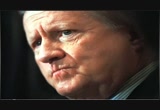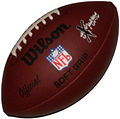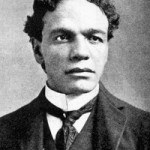 The always flamboyant and usually controversial George Steinbrenner, long-time lead owner of the New York Yankees, passed away at age eighty earlier this week. Steinbrenner had a major impact on the economic landscape of American sports, but the precise nature of his influence was not always appreciated.
The always flamboyant and usually controversial George Steinbrenner, long-time lead owner of the New York Yankees, passed away at age eighty earlier this week. Steinbrenner had a major impact on the economic landscape of American sports, but the precise nature of his influence was not always appreciated.
First of all, few remember that he was a pioneer in bringing African-Americans into the head coaching ranks. In 1961, as the thirty-one-year-old owner of the Cleveland Piper s of the upstart American Basketball League, he hired successful black college coach John McLendon as his team’s head coach. McLendon’s hiring was significant in that he became the first African-American head coach in the history of major league team sports.
Although the ABL folded after less than two years in operation, it was widely accepted as a “major league” at the time, at least in the same sense as its contemporary (and ultimately more successful) fellow start-up league, the American Football League. Although McLendon, complaining of Steinbrenner’s persistent interference, resigned in mid-season, the Pipers went on to win the championship of the ABL’s inaugural season.
Second, as the owner of the Pipers, Steinbrenner revived the practice of start-up leagues signing away star players from their established competitor. After the ABL was organized, Steinbrenner ignored the option clause in the contract of NBA star Dick Barnett and signed him away from the Syracuse Nationals (now the Philadelphia 76ers), triggering litigation that ultimately required Barnett to rejoin his previous team after one year with Cleveland.
The American Football League, founded in 1959, had by contrast carefully avoided signing any players still under contract to NFL teams and instead filled its rosters by outbidding the older league for the top players coming out of college. At the end of the 1962 season, Steinbrenner also did that when he signed the nation’s top college player, Jerry Lucas of Ohio State, to a Pipers contract. However, at this point Steinbrenner sought admission to the NBA, and when the league rejected his overtures, he folded the Cleveland team.
Fourteen years later, Steinbrenner, by now the owner of the Yankees, did more than anyone, including Marvin Miller, Andy Messersmith, and arbitrator Peter Seitz, to do away with the reserve system that for almost a century had prevented major league baseball players from jumping from one team to another in search of a more lucrative contract.
Late in 1975, Seitz, the labor arbitrator hand-picked by baseball owners, ruled that the language contained in the existing collective bargaining agreement and the standard player contract provided team owners with a right to renew a player’s contract for only a single year, and not in perpetuity, as the owners had always claimed. Subsequent efforts to overturn Seitz’s ruling in federal court failed.
What is not always appreciated is that the elimination of the perpetual reserve did not necessary have to usher in an era of high salaries and player-controlled mobility. If the owners had simply agreed among themselves to continue to honor the reserve rights of a player’s most recent team, then Sweitz’ ruling would have had no effect. Being an official free agent would have conferred no benefit if no major league team other than the player’s former team were willing to bid for his services.
Dodger owner Walter O’Malley apparently attempted to orchestrate just such a response after the owners’ efforts to overturn the arbitration ruling in court failed. Although such conduct would normally constitute an illegal group boycott under the Sherman Act, organized baseball’s immunity from the antitrust laws had been confirmed only three years earlier in Flood v. Kuhn. Until Congress intervened — an unlikely prospect — the baseball owners could simply have ignored Seitz’ ruling.
The boycott, however, had no chance because there were at least two owners, Steinbrenner and Ted Turner, the recent purchaser of the Atlanta Braves, who had no interest in retaining the previous system of restraints on player movement. Steinbrenner and Turner had money and wanted to be able to spend it to improve the quality of their teams without having to convince their fellow owners to agree to such transfers. (Simply purchasing the rights to Messersmith would have required the cooperation of Dodger owner O’Malley, who was already no fan of either Steinbrenner or Turner.)
Although Turner and the Braves actually outbid Steinbrenner’s Yankees for Messersmith’s services, they were only able to do so by topping Steinbrenner $1 million offer to the Dodger pitcher and by exploiting the fact that Messersmith had very little desire to play in New York City. So while he missed out on signing the pitcher that he wanted, it was Steinbrenner who insured that the bidding for Messersmith would reach almost unprecedented levels.
Recognizing the futility of unofficial group action because of the renegades Steinbrenner and Turner, the rest of the owners had to turn to collective bargaining to avoid a situation where all players became free agents once their contracts expired. While George Steinbrenner was not the architect of the limited system of free agency that emerged from the negotiations with the Players Association (and which has been the foundation of baseball labor relations ever since), he was the reason that such negotiations went forward.
In his autobiography, Hardball, then Baseball Commissioner Bowie Kuhn credits Steinbrenner with destroying the old order and for setting off a never-ending upward spiral of player salaries.
Given that he parlayed an investment of $10 million in 1964, into one that was worth in excess of $1 billion at the time of his death, it is had to argue that George Steinbrenner didn’t know exactly what he was doing.
 Section 1 of the Sherman Act prohibits concerted actions unreasonably restraining trade, but exempts collective actions by separate business entities who share a complete unity of interest. Whether § 1 applies to the major professional sports leagues has long been a matter of debate. On the one hand, each team is separately owned and seeks to maximize its own profits. On the other hand, each team has an important shared interest in maintaining a full league of competitive teams — who will pay to see the Yankees if they effortlessly crush all opponents? So, does a league potentially violate § 1 when it blocks its members from entering into individual merchandising or broadcasting deals?
Section 1 of the Sherman Act prohibits concerted actions unreasonably restraining trade, but exempts collective actions by separate business entities who share a complete unity of interest. Whether § 1 applies to the major professional sports leagues has long been a matter of debate. On the one hand, each team is separately owned and seeks to maximize its own profits. On the other hand, each team has an important shared interest in maintaining a full league of competitive teams — who will pay to see the Yankees if they effortlessly crush all opponents? So, does a league potentially violate § 1 when it blocks its members from entering into individual merchandising or broadcasting deals?

